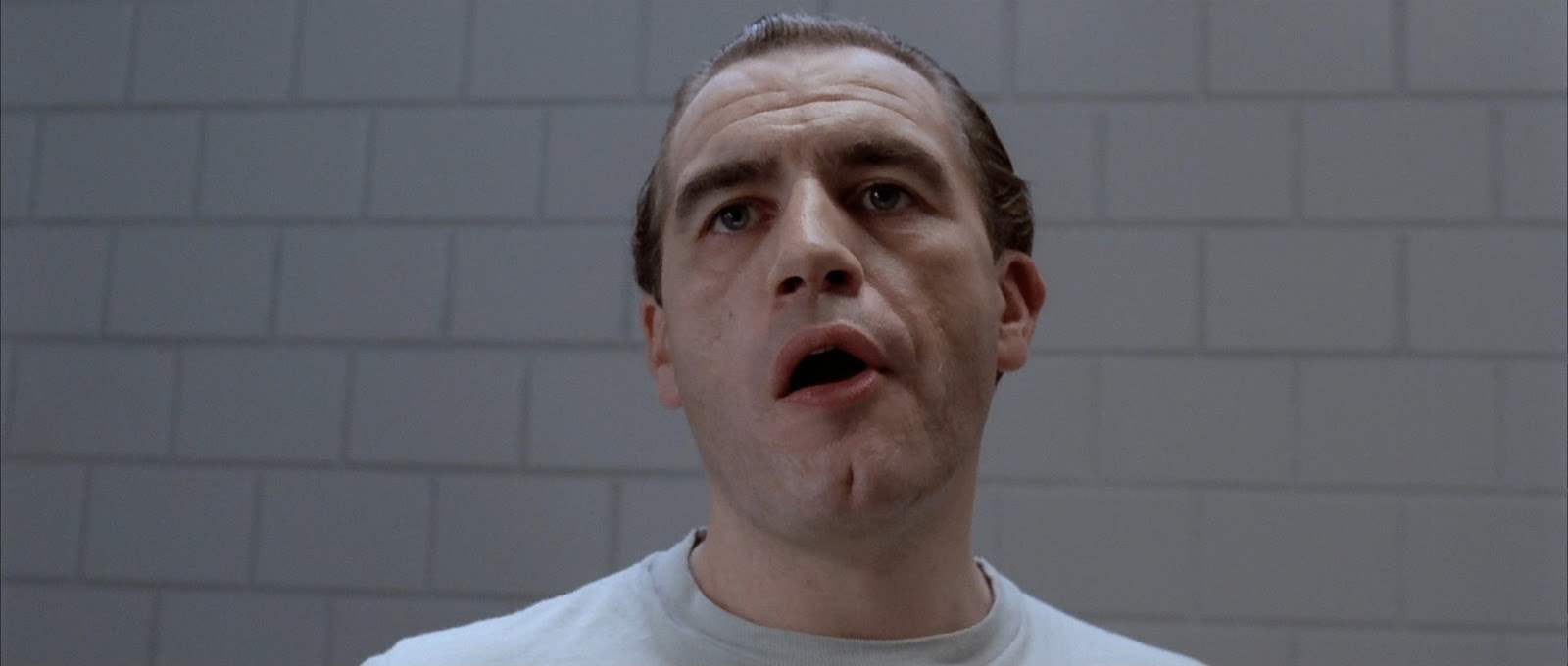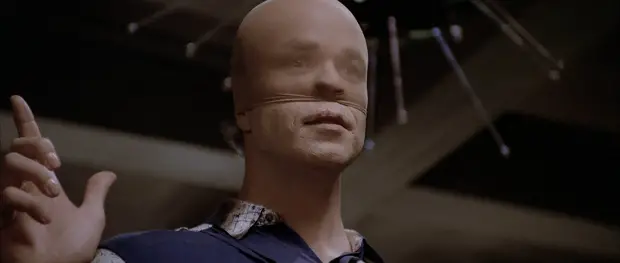After the cult success of Hannibal, there are now two generations who embrace their own version of Hannibal Lecter as the one true representation of the character in their eyes. For some people, Mads Mikkelsen has come to define the role. For others, Anthony Hopkins will always be their Hannibal. Unfortunately, that leaves Manhunter as a twice-forgotten entry into the overarching Hannibal Lecter saga. But even though it’s far from the most well remembered, Manhunter is a great movie that remains crucial to the franchise as it exists on the screen.
Manhunter isn’t just the first time we see Hannibal Lecter on the screen, this time played by Brian Cox, it’s the first screen treatment of several major players in the Hannibal TV series as it serves both as a prequel to and adaptation of the Red Dragon story. The only novel in the series to be adapted to film twice, Manhunter definitely serves as a more stylish and interesting adaptation, even if Brett Ratner’s Red Dragon does feature Anthony Hopkins’ portrayal of Lecter.
If it weren’t for Manhunter, there would be no Silence of the Lambs. That began life as a sequel to this movie. In fact, Brian Cox himself even wrote an early screenplay for it. Eventually, it blossomed into the thriller that swept the Oscars, but it wouldn’t have been able to do so had Manhunter not paved the way for it.

There’s something so neo-noir about Manhunter that makes it endearing, from the music to the stark blue tone that hangs over a good chunk of the film. The movie as a whole is very dreamlike, which is one of my favorite things about it.
Plus, there are great performances to be found. Brian Cox might not have the impact that Anthony Hopkins brought to the role, but there’s something admirably effortless about what he does. Lecter was a member of high society, a man who was charming and, above all, fairly normal. There’s nothing outwardly frightening about him at first. He doesn’t have the immediate creepiness of Hopkins’ performance, but he does have one of Hopkins most admirable traits, which is that this is a monster you feel you could have a polite and intelligent conversation with.
Smartly, though, this is the only film in the series in which Hannibal is actually outshined by the actual antagonist of the piece. Frankly, that’s how I always thought it should be. Even if both actors give a great performance in Silence, it’s nice that the actual threat in Manhunter is the scarier one.
 Tom Noonan’s performance as Francis Dollarhyde might actually be one of my favorites in the genre. It’s so soft-spoken, subdued, yet his voice is completely commanding. Physically, he’s stiff and awkward, but in a very controlled way. He’s never bumbling. I think he does a great job of portraying a character that has absolutely no idea what to do with the world around him.
Tom Noonan’s performance as Francis Dollarhyde might actually be one of my favorites in the genre. It’s so soft-spoken, subdued, yet his voice is completely commanding. Physically, he’s stiff and awkward, but in a very controlled way. He’s never bumbling. I think he does a great job of portraying a character that has absolutely no idea what to do with the world around him.
This version of the Tooth Fairy might not necessarily elicit tremendous sympathy, but you get an understanding of him. There are times where, instead of feeling like a heightened villain for a stylized world, he actually comes across as the most realistic character in the film. And even in the scenes where Dollaryhde feels larger than life, there’s an intent there that’s clear on the part of the director. Mann knows exactly which scenes need to feature Francis Dollarhyde the man and the Tooth Fairy, the monster.
The movie would fall apart without a strong central performance, though. William Peterson is a much more subdued, calmer Will Graham than the character seen in the TV series. But he’s still got his internal scars. He’s a damaged character who seems just quietly unhinged, not unlike Lecter or Dollarhyde. He tries to keep his composure as best as he can, only losing it when there’s no one around to see him. One of the best scenes comes when he has his first reunion with Hannibal. The conversation goes fairly well, almost normal, but this is someone who attempted to kill Will and left him with a great deal of psychological damage. Still, it’s a mostly polite conversation.
And the moment it’s done, Will is running away, out of breath, the room spinning, and it takes everything he has to regain composure. These bits of details, unexpected moments like this, are some of the most undervalued aspects of an already undervalued film.
 One of my favorite things about Manhunter is the way the acting and cinematography are paired. In the mid-80s, films saw a lot of heightened acting and often static camera work. In Manhunter, it’s the opposite. The acting, for the most part, is subtle and restrained. But the camera work and overall visual style are colorful and eccentric, making for a fascinating, rare juxtaposition.
One of my favorite things about Manhunter is the way the acting and cinematography are paired. In the mid-80s, films saw a lot of heightened acting and often static camera work. In Manhunter, it’s the opposite. The acting, for the most part, is subtle and restrained. But the camera work and overall visual style are colorful and eccentric, making for a fascinating, rare juxtaposition.
If you’re a Hannibal fan who has maybe overlooked this chapter in the character’s legacy, I really think you could do worse than to go back and give Manhunter a look. If you like films—especially horror, thrillers, and combinations thereof—from the era, don’t think you’ll walk away disappointed. But I’m also not the type to tie people to a chair and force them to watch the movie, either. I think it’s best to let people find it on their own. And if you’re going to see, then you will see for yourself.




